|
By Dr. Mark Kovacs, PhD, FACSM Human Performance Strategist, Wellness and Longevity Expert Jet lag isn’t just an inconvenience. For high performers, it's a scientifically measurable form of biological disruption. It impairs physical performance, slows reaction time, clouds mental sharpness, and affects hormonal and metabolic health. As someone who’s coached Olympic champions, advised global business leaders, and spent the last two decades immersed in the science of performance, I know one thing: jet lag must be taken seriously if we want to maximize durability, healthspan, and elite function across the lifespan. I have worked in multiple sports, but the three that have some of the most difficult travel schedules and jet lag plays a real impact is professional tennis, the NBA (Basketball) and the MLB (Baseball). Professional tennis players travel more than 100,000 miles per year and have some of the longest flights across the globe. The NBA and MLB also have a grueling travel schedule requiring over 50,000 miles per year and a lot of short trips with multiple circadian rhythm disruptions per week. In this article, we’ll break down:
 What Is Jet Lag? The Circadian Desynchrony Dilemma Jet lag is not just “feeling tired.” It’s a physiological mismatch between your internal circadian clock and the external time at your destination. Your body operates on a roughly 24-hour rhythm governed by the suprachiasmatic nucleus (SCN), which is a small region in the hypothalamus that synchronizes functions like sleep-wake cycles, hormone secretion, metabolism, and core body temperature. It is made up of 10,000 neurons and has a major impact on jet lag. I describe this as our bodies circadian clock. When you rapidly cross multiple time zones, your internal circadian rhythm becomes misaligned with local time. This leads to:
Research shows the circadian system adapts better travelling east vs travelling west (Arendt, 2009). Some data has shown that if you do not put together a structured plan, crossing 6 time zones could impact your performance, health and enjoyment for 6-7 days (Arendt, 2009). Although some of the data shows that for each timezone crosses you may need 1 day for adjustment. So for a 6 hour time change you may need 6 days to fully adjust. This is assuming that you do not apply any of the strategies that we utilize to help individuals adjust. Why Jet Lag Matters for Durability and Healthspan Chronic disruption of circadian rhythms has been linked to:
Our goal with the work we do with elite individuals and companies is to build resilient, high-functioning humans across all time zones and a significant aspect of our work is helping these high achievers manage jet lag with the latest science in a practical way. What the Latest Science Says: Interventions That Work 1. Light Exposure Timing Light is the primary zeitgeber - an environmental cue that resets the circadian clock. Strategic exposure to natural or appropriate artificial light can shift your internal clock in the desired direction. Exposure to bright light in the morning helps advance the clock (ideal for eastward travel), while evening light delays it (ideal for westward travel). 💡 Application:
Here is one cost-effective and small 10,000 lux (sun mimicking) lamp that works great for travel or home use - https://verilux.com/collections/happylight-therapy-lamps/products/happylight-mini 2. Melatonin Supplementation Melatonin is the body’s “sleep hormone,” secreted by the pineal gland in response to darkness. Exogenous melatonin can shift circadian rhythms, especially when taken 4–6 hours before endogenous secretion begins. A systematic review in the reputable Coachrane Database confirms that low-dose melatonin (~0.5–3 mg) taken at local bedtime at the destination can accelerate adaptation and improve sleep onset (Herxheimer et al 2002). 💊 Potential Application:
3. Timed Exercise Exercise itself is a circadian cue. Moderate-intensity aerobic exercise in the morning advances the clock (east travel), while evening exercise delays it (west travel). Exercise timing significantly influenced how fast elite athletes adapted to transmeridian travel. This supports its role as a non-pharmacological intervention to shift rhythms (Thomas et al. 2020). 🏃 Application:
4. Sleep Banking and Strategic Napping Travel-induced sleep debt is cumulative. Preemptively increasing total sleep time—called sleep banking—can blunt jet lag effects. Strategic naps (15–30 min) can also restore alertness.Also, pre-travel sleep extension improves alertness and performance post-travel, especially in athletes (Van Rensburg et al 2020). 😴 Application:
Caffeine is a double-edged sword. It can be very useful when timed correctly but disruptive if overused at the wrong time. Research shows it can improve alertness during circadian low points, but timing is critical. In an in-depth review article by Halson et al (2019) caffeine taken at local morning (after red-eye flights) improved cognitive alertness and mood. ☕ Application:
 6. Meal Timing and Nutrition Your liver, gut, and pancreas all operate on circadian rhythms. Eating at inconsistent or inappropriate times can confuse peripheral clocks and exacerbate jet lag. Fasting during travel and resuming meals at destination time may help resynchronize clocks, according to animal models and limited human trials. 🍽️ Application:
 Technology and Innovation: A number of technologies are available to help with the flight to improve sleep (if it is an overnight flight) and to also improve blood flow to limit stiffness in joints and muscles as well. Sleep Aid Technologies It is an exciting time with the advancements in wearable technologies that can impact Jet Lag and specifically improving air travel and sleep. A few different options exist due to rapid development of quality products. One product that I use with many high performers is a neurotech headband that is clinically shown to help people fall asleep significantly faster, and restart sleep fast if they wake up (Bressler et al 2024). This is non-invasive and easy to wear on the flight itself and also as a regular sleep aid to help individuals fall asleep faster in the new time zone (but is also great for regular sleep issues at home as well). I liked the product so much I became and advisor to them to help athletes and high performers in all industries get to sleep easier and get back to sleep faster if they awake during the night. Take a look here at Elemind - East vs. West Travel: What’s Harder to Adapt To? Eastward travel shortens the circadian day (you have to go to bed earlier), which is biologically harder than westward travel (lengthening the day). This explains why a 9-hour shift to Europe can feel worse than a similar trip to Asia. 🧭 Key Takeaway:
Protocols I Use With Athletes and Executives Based on two decades of experience with Olympic athletes, ATP/WTA players, NBA teams, MLB players and high-performing CEOs, here’s a practical framework I apply when helping individuals prepare for time zone shifts. Just remember that everyone is different and I spend a lot of time personalizing the recommendations for each individual based on genetics, blood work, travel schedule, environmental changes and individual preferences as well. ✈️ Pre-Flight (2–3 Days Before Travel):
🛬 In-Flight:
🌞 Post-Arrival (First 3 Days):
Technology and Tools That Help Here are evidence-supported tools I often recommend:
Final Thoughts: Travel Durability Is About Rhythm At its core, durability - the ability to perform at a high level for a long time - is intimately tied to rhythm. When we disrupt our internal rhythm through travel, we temporarily lose a degree of control over performance, health, and cognitive clarity. But we can reclaim it with the right strategies. The most durable people I’ve coached (on the court and in the boardroom) don’t just adapt quickly. They plan ahead. They prioritize recovery. And they understand that every cell in the body keeps time - we just need to give it the right cues. So the next time you travel, don’t wing it. Build a protocol, adjust your environment, and manage your body clock for sustained performance. References
0 Comments
by Mark Kovacs, PhD, FACSM, CSCS Human Performance Strategist, Health & Longevity Expert Executive Summary Wellness retreats are no longer niche luxury offerings for the executive elite. Today, they represent a strategic, science-backed investment for companies seeking to enhance employee health, productivity, engagement, and longevity. With burnout, chronic stress, and disengagement on the rise across global workforces, wellness retreats (when executed properly) offer companies a measurable return on investment (ROI) through improved cognitive function, reduced healthcare costs, increased morale, and enhanced organizational performance. Drawing on decades of research, both academic as well as practical in the “real world”, this white paper presents compelling evidence that corporations who prioritize wellness through structured retreats and offsites outperform their peers in many areas including resilience, retention, happiness, lower healthcare costs and overall profitability. Introduction: The Crisis of Workplace Well-being The modern workplace is facing a health crisis. Employees are experiencing record levels of stress, anxiety, sleep disruption, and physical decline. According to the World Health Organization, stress costs U.S. businesses over $300 billion annually due to absenteeism, turnover, and lost productivity. Furthermore, Gallup's State of the Global Workplace (2023) notes that only 23% of employees are thriving at work. The traditional corporate wellness program (a subsidized gym membership or one-off mindfulness session) is no longer sufficient. To create real change, companies must embrace immersive, system-based approaches to well-being. One area that can be a major benefit in this area are wellness retreats. What Stress Has Such A Negative Impact:
Defining a Modern Wellness Retreat A wellness retreat is more than just an offsite with healthy food. It is a curated, intentional experience that targets physical, mental, emotional, and often spiritual dimensions of health. The most effective retreats integrate:
The Science Behind Retreats and Human Performance In a 2024 Wellhub study (Wellhub, 2024) it was found that 95% of companies that implemented structured wellness programs (including retreats) see positive returns in 2024 up from 90% in 2023. Additionally, 91% reported the cost of healthcare benefits decreased as a result of their wellness program. This is directly attributed to reduced sick days, lower healthcare and recruiting costs, as well as higher retention rates, increased productivity and overall employee satisfaction. Nearly two-thirds saw at least $2 in savings for every $1 invested. Benefits cited include lower healthcare costs, improved productivity, reduced absenteeism, and stronger employee retention—many of which are amplified during immersive experiences like retreats. For every $1 spent on corporate wellness yields $3.27 in reduced healthcare costs and $2.73 in decreased absenteeism - nearly $6 in total value. The findings underscore the tangible returns that can result from structured wellness initiatives, including those offered in offsite or retreat settings (Baicker et al 2010).
What Makes a Wellness Retreat Successful? Not all retreats deliver ROI. Key elements include:
Recommendations for Companies
Conclusion: The Future of Work Is Human Companies that want to lead in the next decade must prioritize human sustainability. This means investing not just in tools or training, but in the total health and performance of their people. Wellness retreats are a powerful and proven tool in this strategy offering not just rejuvenation, but education, and life changing experiences. By integrating science-backed experiences into corporate culture, organizations create healthier, more loyal, and more productive teams. The result is not only a stronger bottom line—but a better way to work. Dr. Mark Kovacs, PhD, FACSM is a global expert in human performance, former professional athlete, and executive health consultant. He has led wellness, performance, and recovery strategy for organizations including Canyon Ranch, Gatorade, the USTA, and the NBA’s Cleveland Cavaliers. He currently advises companies, resorts, and athletic organizations on performance, healthspan, longevity and executive wellness.
Contact: [email protected] | www.mark-kovacs.com References Baicker, K., Cutler, D., & Song, Z. (2010). Workplace wellness programs can generate savings. Health Affairs, 29(2), 304–311. https://doi.org/10.1377/hlthaff.2009.0626 Deloitte. (2023). 2023 Global human capital trends. https://www2.deloitte.com Gallup. (2023). State of the Global Workplace Report. https://www.gallup.com/workplace Gelles, D. (2015, June 18). At Aetna, a C.E.O.’s management style starts with meditation. The New York Times. https://www.nytimes.com Global Wellness Institute. (2020). Defining the workplace wellness economy. https://globalwellnessinstitute.org Loehr, J., & Schwartz, T. (2003). The power of full engagement: Managing energy, not time, is the key to high performance and personal renewal. Free Press. PwC Health Analytics. (2022). Workplace wellness program analysis: Trends and impact. PwC Internal White Paper. Stanford Center for Work and Wellbeing. (2023). The role of wellness offsites in psychological safety. Stanford University Research Brief. Virgin Pulse. (2021). State of employee well-being and business impact. https://www.virginpulse.com Wellhub. (2024, April 17). New Wellhub research finds companies measuring wellness ROI see major returns. Retrieved from https://wellhub.com/en-us/blog/press-releases/study-reveals-strong-return-on-investment-for-corporate-wellness-programs/ World Economic Forum. (2022). Workforce mental health & wellbeing 2030. https://www.weforum.org By Dr. Mark Kovacs, PhD, FACSM | Human Performance Scientist In today’s fast-paced world, we’re constantly searching for ways to optimize energy, focus, and performance. Whether you're an executive managing global meetings, a parent juggling multiple priorities, or an elite athlete pushing for that extra edge, energy management is the common denominator. And when it comes to energy optimization, few techniques are as simple, effective, and surprisingly underutilized as the “caffeine nap.” Yes, you read that right. A “caffeine nap”! This strategic pairing of coffee and a 20-30 minute nap, might sound counterintuitive, but the science is compelling. It's one of those rare biohacks that works with your body’s physiology, not against it. And the benefits extend beyond just alertness; the caffeine nap can improve reaction time, reduce fatigue, enhance cognitive function, and even help with mood and decision-making. I have personally used it myself and with my athletes and executives for more than 15 years. In this article, I’ll break down the science behind the caffeine nap, explain why it works so well, share specific protocols to maximize its effectiveness, and explore how it fits into a performance lifestyle rooted in durability. What Is a Caffeine Nap? A caffeine nap is exactly what it sounds like: you consume a moderate amount of caffeine, typically via coffee or a mild caffeine pill, and then immediately lie down for a short nap (ideally 20–30 minutes). The key is timing the caffeine consumption and the nap to work synergistically. The result? When you wake up, you experience a double boost: the restorative effects of a short nap and the alertness-enhancing effects of caffeine, which kicks in just as you wake. Why It Works: The Science of Caffeine, Adenosine, and Sleep Pressure To understand why the caffeine nap is so powerful, we need to examine how caffeine interacts with adenosine, a molecule that builds up in the brain the longer you're awake. Caffeine and Adenosine Receptors Adenosine is a neuromodulator that regulates sleep and suppresses arousal. As adenosine levels increase throughout the day, you begin to feel tired. Caffeine, meanwhile, works by binding to adenosine receptors in the brain, essentially “blocking” the sleepiness signal. It doesn’t remove adenosine from your system—it just prevents it from being detected temporarily (Fredholm et al., 1999). The Nap Advantage Here’s the key insight: a short nap can actually reduce the concentration of adenosine in the brain. So, if you nap during the time it takes for caffeine to fully absorb and reach peak plasma levels (usually 30–60 minutes after ingestion), you not only get rid of some of the adenosine naturally, but when you wake, the caffeine can then bind to fewer receptors, which amplifies its energizing effect. This dual mechanism is why caffeine naps outperform both caffeine alone and napping alone in controlled studies (Bonnet and Arand 1994; Centofanti et al. 2020) What the Research Shows Multiple peer-reviewed studies have demonstrated the superior effects of caffeine naps compared to other fatigue countermeasures. Here are a few standout findings:
How to Take a Caffeine Nap: Step-by-Step Protocoly require some trial and error If you want to try the caffeine nap for yourself, here’s the protocol I recommend for high performers: 1. Time It During the Afternoon Dip Aim for your nap between 1:00–3:00 p.m. This aligns with your body’s natural circadian trough and helps avoid disruption to nighttime sleep. 2. Consume Caffeine Quickly
Common Myths About the Caffeine Nap Let’s address a few misconceptions that prevent people from leveraging this powerful tool. Myth 1: “Caffeine will prevent me from falling asleep.” Surprisingly, caffeine takes 30–90 minutes to fully absorb into the bloodstream. If you lie down right after consuming it, you have a solid window to fall asleep before it affects your brain. It’s less about deep sleep and more about resetting your system. Myth 2: “Naps make me groggy.” Long naps can, but caffeine naps are short and designed to avoid deep sleep. Plus, the caffeine minimizes post-nap grogginess (sleep inertia), making it ideal even for people who don’t normally nap well. Myth 3: “I’ll get dependent on caffeine naps.” Using caffeine naps strategically is different than relying on caffeine all day. When used sparingly, they can actually reduce your total caffeine consumption and improve sleep quality by reducing late-day caffeine use. When and Where to Use Caffeine Naps Caffeine naps are ideal in high-performance situations where focus and energy are needed but traditional rest isn’t possible. Some great applications include:
Caffeine Nap Considerations for Health and Durability As with any intervention, context matters. Here are some important points to keep in mind for long-term health: 1. Don’t Overdo the Caffeine Too much caffeine, especially late in the day, can disrupt sleep quality. For most people, 100–300 mg (1–2 cups of coffee) is optimal for a caffeine nap. 2. Avoid After 3 PM Caffeine has a half-life of 4–6 hours. If taken too late, it can interfere with your ability to fall asleep at night. 3. Pair With Quality Nighttime Sleep Caffeine naps are not a substitute for deep, restorative sleep. They’re a performance enhancer, not a recovery tool. 4. Use Strategically Reserve caffeine naps for key moments: travel fatigue, tough training or competition days, long workdays - not every day. Caffeine, Performance, and Longevity: A Durability Perspective From a durability standpoint—maximizing energy across decades, not just days—caffeine naps represent a well-tolerated, science-backed micro-intervention. They reduce the need for excessive caffeine throughout the day, help balance the sleep-wake cycle, and support consistent high output without major biological cost. Moreover, studies show that caffeine in moderate doses (100–400 mg/day) is associated with a lower risk of neurodegenerative diseases, including Alzheimer’s and Parkinson’s, and may have protective cardiovascular effects when not paired with smoking or excess sugar (Santos et al., 2010; Eskelinen & Kivipelto, 2010). That said, caffeine tolerance varies, and individuals with certain genetic variations (e.g., CYP1A2 slow metabolizers) may experience different effects. It’s always best to test, personalize, and use wearables or subjective tracking to gauge how your body responds. I know use genetic testing to help with may aspects of human performance, but one aspect is how to help dose caffeine in a more personalized manner. Final Thoughts The caffeine nap is a simple yet powerful tool in the performance and recovery arsenal. Backed by decades of sleep and neuroscience research, it gives you a legal, natural, inexpensive way to supercharge your afternoon energy, improve mental focus, and reduce fatigue in minutes. In a world where attention is the new currency, energy management is foundational to high performance and long-term health. By incorporating small, smart strategies like the caffeine nap, we not only boost productivity today…we protect our health for tomorrow. So the next time you feel the afternoon slump creeping in or you need a pick me up, the caffeine nap may be your best option. References
Bonnet, M.H., & Arand, D.L. (1994). The use of prophylactic naps and caffeine to maintain performance during a continuous operation. Ergonomics, 37(6), 1009–1020. https://doi.org/10.1080/00140139408963714 Centofanti, S., Banks, S., Coussens, S., Gray, D., Munro, E., Nielsen, J., & Dorrian, J. (2020). A pilot study investigating the impact of a caffeine-nap on alertness during a simulated night shift. Chronobiology International, 37(9–10), 1469–1473. https://doi.org/10.1080/07420528.2020.1804922 Eskelinen, M. H., & Kivipelto, M. (2010). Caffeine as a protective factor in dementia and Alzheimer's disease. Journal of Alzheimer's Disease, 20(s1), S167–S174. Fredholm, B. B., Bättig, K., Holmén, J., Nehlig, A., & Zvartau, E. E. (1999). Actions of caffeine in the brain with special reference to factors that contribute to its widespread use. Pharmacological Reviews, 51(1), 83–133. Hayashi, M., Masuda, A., & Hori, T. (2003). The alerting effects of caffeine, bright light and face washing after a short daytime nap. Clinical Neurophysiology, 114(12), 2268–2278. https://doi.org/10.1016/S1388-2457(03)00278-5 Horne, J. A., & Reyner, L. A. (1996). Counteracting driver sleepiness: Effects of napping, caffeine, and placebo. Psychophysiology, 33(3), 306–309. Santos, C., Costa, J., Santos, J., Vaz-Carneiro, A., & Lunet, N. (2010). Caffeine intake and dementia: Systematic review and meta-analysis. Journal of Alzheimer’s Disease, 20(s1), S187–S204. Signal, T. L., Gander, P. H., Anderson, H., & Brash, S. (2009). Scheduled napping as a countermeasure to sleepiness in air traffic controllers. Chronobiology International, 26(4), 754–764. Souissi, N., Abedelmalek, S., Chtourou, H., Ben Cheikh, R., & Sahnoun, Z. (2013). Effects of caffeine ingestion on mood states, simple reaction time, and short-term maximal performance after 36 h of sleep deprivation. European Journal of Applied Physiology, 113, 1027–1036. By Dr. Mark Kovacs, PhD, FACSM, CSCS Human Performance Strategist | Sport Scientist | Longevity Expert  Introduction Across centuries and continents, sauna bathing has served as a ritual of cleansing, recovery, and rejuvenation. From the Finnish sauna (traditional sauna) to modern infrared cabins, the act of purposeful heat exposure is more than just a tradition — it's a science-backed practice with profound effects on human health, athletic recovery, and longevity. Having used sauna’s as an athlete first and then for the last two decades advising national sports federations, pro sports team and the top wellness and longevity centers, this article is a summary guide about what the differences are in the major sauna options and also what to look forward if you are considering purchasing a product. The field has become complicated and many large companies who should have expert advisors working with them are still making major mistakes in the types of saunas they are purchasing and not providing accurate or appropriate protocols for their members, guests and athletes. The hope is that this will help individuals and corporations make better decisions and provide the consumer (user) with a better experience and help them in their health and performance journey. In this guide, we will explore:
Types of Saunas 1. Traditional Finnish Sauna (Dry Sauna) This high-temperature, low-humidity sauna is typically heated with a wood or electric stove. Temperatures range between 70°C to 100°C (158°F to 212°F), with humidity around 10–20%. Water is occasionally poured on rocks to increase perceived heat without drastically raising humidity. Benefits: Elevates core body temperature rapidly, stimulates cardiovascular adaptation, increases sweat rate. 2. Steam Sauna (Wet Sauna) Also known as a steam room or Turkish bath, this uses moist heat. Temperatures are lower, around 40°C to 50°C (104°F to 122°F), but humidity reaches 100%. Benefits: Effective for skin hydration, respiratory benefits, and relaxation; less cardiovascular stress due to lower temperature. 3. Infrared Sauna This modern sauna type uses infrared radiation (IR) to directly heat the body without significantly warming the surrounding air. Typical temps range from 45°C to 65°C (113°F to 149°F). Benefits: Deeper tissue penetration with lower environmental heat load. Often preferred for joint pain, muscle recovery, and individuals sensitive to high heat. Understanding Infrared Radiation in Saunas: Wavelengths and What to Look For Infrared saunas differ from traditional saunas by using infrared light to directly heat the body rather than the surrounding air. This results in lower ambient temperatures while still achieving deep tissue heat penetration. This combination makes it more tolerable for longer sessions, especially for individuals sensitive to high heat.
Most commercial far-infrared saunas use ceramic or carbon heating panels that emit radiation in the 6–12 µm range — ideal for penetrating skin and raising core body temperature. What to Look for When Choosing an Infrared Sauna
4. Far-Infrared and Near-Infrared Some infrared saunas offer near-infrared (NIR) or far-infrared (FIR) light. FIR is more commonly used in wellness centers and has been shown to enhance detoxification and promote mild cardiovascular effects (Laukkanen et al., 2018). Near-Infrared (NIR) vs. Far-Infrared (FIR): What’s the Difference — and Why It Matters Modern infrared saunas often distinguish themselves by offering different infrared light spectra: near-infrared (NIR) and far-infrared (FIR). Each penetrates the body differently, activates distinct physiological responses, and may be more or less appropriate depending on your goals - whether it’s skin health, detoxification, cardiovascular conditioning, or mitochondrial stimulation. Far-Infrared (FIR)
Documented Benefits:
Who Should Use FIR?
Near-Infrared (NIR)
Documented Benefits:
Often Delivered Via:
Who Should Use NIR?
Pro Tip: Many high-end saunas now offer full-spectrum technology, incorporating NIR, MIR, and FIR in a single session. If you're seeking broad-spectrum benefits, including deep tissue heating and mitochondrial activation, this is your best bet. Ideally you would like to be able to turn on and off the different options based on how best you may want to use it. What to Look for When Buying
Why Most People Do Not Use the Infrared Sauna’s Correctly. The Distance Matters! How Close Should You Be to Infrared Light? ✅ For Near-Infrared (NIR) Light Therapy
✅ For Far-Infrared (FIR) Heat Therapy
💡 Pro Tips
Physiological Mechanisms: Why Saunas Work Sauna exposure creates a mild thermal stress, triggering a range of protective and adaptive responses, including:
Important: Always hydrate before and after. Beginners should start conservatively and build tolerance. Scientific Evidence: Health, Performance, Longevity 1. Cardiovascular & Mortality Outcomes A landmark 20-year Finnish study involving over 2,000 men found that frequent sauna use (4–7x/week) was associated with a 50% lower risk of cardiovascular disease and all-cause mortality compared to once-weekly users (Laukkanen et al., 2015). 2. Brain Health and Neuroprotection Heat exposure may reduce the risk of dementia and Alzheimer's disease via improved vascular function and reduced oxidative stress (Laukkanen et al., 2017). 3. Performance Recovery Saunas reduce muscle soreness, enhance muscle repair via HSP (Heat Shock Proteins) activation, and improve parasympathetic nervous system balance post-exercise (Scoon et al., 2007). 4. Hormonal and Stress Modulation Short-term heat stress increases growth hormone (GH) and modulates cortisol. These responses aid in recovery and tissue regeneration (Kaikkonen et al., 2024). Contrast Therapy: Sauna + Cold Combining sauna with cold immersion or showers — known as contrast therapy — creates vascular pumping effects, enhances muscle recovery, and improves mood through dopamine and norepinephrine release. Durability Recommended Contrast Protocol
Protocols by Goal ✅ Protocol A: General Health and Cardiovascular Longevity
🏋️♂️ Protocol B: Athletic Recovery
Evidence: Gryka et al. (2020); Kaikkonen et al. (2024) 🧬 Protocol C: Longevity and Stress Resilience
Evidence: Laukkanen et al. (2018); Seitz et al. (2021); Zaccardi et al. (2024) Safety Considerations
Summary
Sauna use is one of the most accessible and scientifically validated lifestyle practices for improving cardiovascular function, metabolic health, neurological resilience, and overall longevity. Whether you’re an athlete seeking faster recovery or a longevity enthusiast pursuing healthier aging, sauna bathing offers a potent, low-risk tool — when used intentionally. When combined with cold therapy, nutrient timing, and hydration strategies, the impact becomes even more profound. What was once a cultural ritual is now a foundational element of modern healthspan optimization. References Allan, A., & Mawhinney, C. (2023). Post-exercise cooling lowers skeletal muscle inflammation and damage: Evidence from recent physiological models. Journal of Physiology, 601(10), 2345–2361. https://doi.org/10.1113/JP284293 Gryka, D., Pilch, W., & Szarek, M. (2020). Thermoregulatory and cardiovascular responses to Finnish sauna bathing in healthy men. International Journal of Environmental Research and Public Health, 17(12), 4391. https://doi.org/10.3390/ijerph17124391 Hussain, J. N., & Cohen, M. M. (2018). Clinical effects of regular dry sauna bathing: A systematic review. Evidence-Based Complementary and Alternative Medicine, 2018, 1857413. https://doi.org/10.1155/2018/1857413 Kaikkonen, P., et al. (2024). Acute hormonal responses to heat exposure in trained men: implications for athletic recovery. European Journal of Applied Physiology, 124, 575–588. https://doi.org/10.1007/s00421-024-05642-9 Kihara, T., et al. (2002). Repeated sauna treatment improves vascular endothelial and cardiac function in patients with chronic heart failure. Journal of the American College of Cardiology, 39(5), 754–759. https://doi.org/10.1016/S0735-1097(01)01713-1 Laukkanen, T., Kunutsor, S., Zaccardi, F., & Laukkanen, J. A. (2015). Sauna bathing is associated with reduced cardiovascular and all-cause mortality in middle-aged Finnish men. JAMA Internal Medicine, 175(4), 542–548. https://doi.org/10.1001/jamainternmed.2014.8187 Laukkanen, T., Laukkanen, J. A., & Kunutsor, S. (2018). Cardiovascular and other health benefits of sauna bathing: A review of the evidence. Mayo Clinic Proceedings, 93(8), 1111–1121. https://doi.org/10.1016/j.mayocp.2018.04.008 Seitz, J., Reimers, A. K., & Wichert, R. (2021). Sauna bathing as a health promotion practice: A review on the health effects of regular sauna bathing. Medical Research Archives, 9(6). https://esmed.org/MRA/mra/article/view/3965 Scoon, G. S., Hopkins, W. G., Mayhew, S., & Cotter, J. D. (2007). Effect of post-exercise sauna bathing on endurance performance. European Journal of Applied Physiology, 101(6), 659–667. https://doi.org/10.1007/s00421-007-0548-y Zaccardi, F., Laukkanen, T., & Laukkanen, J. A. (2024). Long-term sauna use and mortality: Expanded follow-up from the Kuopio Ischaemic Heart Disease Risk Factor Study. Scandinavian Journal of Medicine & Science in Sports. https://dialnet.unirioja.es/servlet/articulo?codigo=9704407 By Dr. Mark Kovacs, PhD, FACSM, CSCS | Human Performance Strategist | www.mark-kovacs.com Surgery, whether it’s a scheduled orthopedic procedure or an unexpected intervention, places an extraordinary demand on the body. It sets off a chain reaction of metabolic, inflammatory, and immune responses that can significantly influence recovery trajectory. While modern surgical techniques continue to evolve, one critical and often underestimated factor in that recovery is nutrition. As a performance physiologist and healthspan specialist, I’ve worked closely with hundreds of top-tier athletes, executives, and high performers, many of whom faced surgical procedures as part of their journey. Through that experience, one of the most controllable aspects that lead to better outcome has become increasingly clear: strategic nutritional planning before and after surgery consistently leads to faster, stronger, and more complete recoveries. In this article, I’ll break down the most effective, evidence-based nutritional strategies to reduce complications, preserve lean muscle, minimize unnecessary inflammation, and accelerate tissue regeneration. Whether you're preparing for a meniscus repair, spinal fusion, ACL repair, shoulder labrum tear or a minor joint arthroscopy, your nutrition can be one of the most controllable, yet powerful, tools to support healing. As always, personalization is key. This information is for educational purposes only and every individual will have a different plan. Please always consult with your healthcare professionals and surgical team. The Impact of Surgery on the Body Surgery initiates a catabolic state marked by:
Prehabilitation: Nutrition Starts Before the Scalpel Just as athletes train before a competition, surgical candidates should prepare before the procedure. This process, known as prehabilitation, includes not only exercise and mindset but also strategic nutritional priming. Key Pre-Surgery Nutritional Goals:
Evidence-Based Pre-Surgical Recommendations
2. Carbohydrate Loading (When Appropriate) In certain circumstances, complex carbohydrates in the 24 hours before surgery can help reduce insulin resistance and blunt the catabolic response. Avoid refined sugars and prioritize whole grains, legumes, and starchy vegetables. 3. Immune-Supportive, Antioxidants, Polyphenols, Nutrients & Supplementation
4. Antioxidants and Polyphenols Include a variety of fruits, vegetables, green tea, and turmeric to support endogenous antioxidant defenses. 5. Probiotics and Gut Health A healthy gut microbiome may influence post-surgical infection risk and inflammation. Consider fermented foods or a high-quality probiotic supplement 1–2 weeks prior to surgery and then for the month following. Valuable to help protect the gut flora and immunity, even more valuable if you have taken antibiotics. A broad spectrum probiotic with at least 10 billion CFUs and multiple strains (e.g. Lactobacillius, Bifidobacterium). Post-Surgical Nutrition: Fueling Recovery and Regeneration Immediately after surgery, nutritional needs often increase, not decrease. Unfortunately, nausea, appetite suppression, hospital food, and sedation can all contribute to undernutrition—a major risk factor for complications. The First 72 Hours: Critical Window In the immediate post-op phase, the body requires:
Core Nutritional Strategies After Surgery 1. Protein & Collagen Support
2. Omega-3 Fatty Acids (EPA/DHA)
3. Anti-Inflammatory Nutrients
4. Vitamins and Minerals for Healing
5. Hydration and Electrolytes Fluid loss, anesthesia, and immobility can cause dehydration. Include:
6. Blood Sugar Control Post-surgical hyperglycemia can impair healing. Limit added sugars and refined carbs. Use fiber, protein, and healthy fats to maintain glycemic balance. 7. Probiotics and Prebiotics Surgical stress, antibiotics, and pain meds can damage gut health. Include:
Sample 1-Day Post-Surgery Nutrition Plan Not all surgeries are the same and not all individuals are the same. Therefore, it is important to not simply copy a post-surgery nutrition plan without guidance from a trained healthcare professional. The information is a sample of a real plan, but this was tailored to an individuals specific needs based on the type of surgery, age, return to activity goals, known blood work prior to the surgery etc. This is the nutritional information (without the supplementation). Breakfast:
If you are interested in getting more specific, here is an example of a supplement plan to go along with the nutritional plan. This was specifically for a professional athlete. Just remember that this is for educational purposes only and you should design your own nutritional and supplementation plan with your appropriate healthcare provider. Week Before Surgery: Prehabilitation Supplement Plan (Days –7 to 0) Supplement Week 1 (Immediate Recovery: Days 1–7) Goal: Control inflammation, support tissue repair, minimize catabolism, prevent infection. Weeks 2–4 (Rebuilding & Functional Recovery) Goal: Enhance tissue remodeling, optimize mobility, and support metabolic healing. Key Takeaways: Your Nutritional Checklist
Before Surgery:
Conclusion: Nutrition as a Tool for Durability Nutrition is not an afterthought—it’s a cornerstone of surgical resilience. Whether you're a high-performance athlete or a active adult looking to get back to the activities you love, your recovery trajectory will be shaped in large part by how well you nourish your body before and after the procedure. By integrating evidence-based nutritional strategies into your surgical plan, you can reduce complications, protect lean mass, enhance healing, and get back to doing what you love—sooner and stronger. For personalized guidance or to schedule a consult visit www.mark-kovacs.com References Braga, M., et al. (2021). Perioperative immunonutrition in surgical patients. Nutrition, 91-92, 111397. Gillis, C., & Carli, F. (2015). Promoting Perioperative Metabolic and Nutritional Care. Anesthesiology Clinics, 33(1), 73–91. Hirsch, K. R., Wolfe, R. R., & Ferrando, A. A. (2021). Pre- and Post-Surgical Nutrition for Preservation of Muscle Mass, Strength, and Functionality Following Orthopedic Surgery. Nutrients, 13(5), 1675. Li, X., et al. (2023). The role of nutrition in postoperative recovery. Nutrients, 15(4), 819. Weimann, A., et al. (2021). ESPEN guideline: Clinical nutrition in surgery. Clinical Nutrition, 40(7), 4745-47 By Dr. Mark Kovacs, PhD, FACSM www.mark-kovacs.com When we talk about living longer, and better, we often focus on the obvious: nutrition, strength, mental health, sleep, recovery. All critically important. But there’s one metric that stands out as a powerful, objective predictor of how long and how well you’ll live. It’s called VO₂max. The value of this test can be life changing. Take it from someone who has run more than 1,000 VO2max tests over my career on Olympic Champions to individuals in their 80s. Your VO₂max isn’t just a number reserved for elite athletes. It’s arguably the most important—and underappreciated—physiological marker for durability, healthspan, and longevity. Recent research has made one thing clear: maintaining or improving VO₂max could add years to your life. Not just more time; but more quality time. Let’s break down what VO₂max really is, why it matters, and how you can use it to live younger, longer. What Is VO₂max? VO₂max stands for “maximal oxygen consumption.” It refers to the maximum amount of oxygen your body can take in, transport, and utilize during intense physical activity. Measured in milliliters of oxygen per kilogram of body weight per minute (ml/kg/min), it reflects the efficiency of your heart, lungs, blood vessels, and muscles to work in coordination under stress. In plain terms: It’s your body’s aerobic engine. The higher your VO₂max, the more efficiently you deliver oxygen to your cells—and the more durable your entire system becomes. Why VO₂max Is So Critical for Longevity A growing body of research has shown that VO₂max isn’t just a performance metric—it’s one of the most powerful predictors of how long you’ll live. A widely referenced study by Laukkanen et al. (2022) titled “VO₂max—A Poorly Understood but Possibly Most Important Predictor of Longevity and Health” underscores the fact that even modest improvements in VO₂max are associated with dramatic reductions in all-cause mortality. Here’s what the data tells us:
VO₂max, Cardiovascular Health, and Telomere Preservation A 2023 systematic review and meta-analysis published in the Journal of Clinical Endocrinology & Metabolism further supports VO₂max as a core biological marker of healthy aging. It revealed a strong association between aerobic fitness and longer telomeres—the protective end caps of DNA that degrade with age. “Individuals with higher cardiorespiratory fitness exhibited significantly longer telomere length and reduced markers of cellular aging.” — Wang et al., 2023, Journal of Clinical Endocrinology & Metabolism Telomeres are widely recognized as markers of your biological clock. Longer telomeres are linked to reduced disease risk, better immune function, and delayed onset of age-related decline. So when we talk about improving VO₂max, we’re not just enhancing heart and lung function—we’re influencing your cellular rate of aging. Reference: Wang et al., 2023 – Aerobic fitness and telomere maintenance What Is a Good VO₂max? And How Do You Measure It? The average VO₂max in adults declines by 10% per decade after age 30—unless you actively train to preserve or improve it. The good news it is simple to train, but may not be that easy for most people. General VO₂max Guidelines (ml/kg/min) VO₂max can be tested through:
Why VO₂max Declines With Age—and What You Can Do About It The decline in VO₂max with aging is mostly due to:
And the earlier, and more consistently, you train it, the more protection you build against aging. How to Improve VO₂max: Protocols That Work You don’t need to be a marathoner to improve your VO₂max. But you do need to apply intensity and progression in a structured way. Here are evidence-backed protocols that help boost VO₂max: 1. Zone 2 Training (Base Building)
2. VO₂max Intervals (High-Intensity Aerobic Work)
3. Sprint Intervals (Anaerobic Aerobic Hybrid)
VO₂max vs. Strength: Which Matters More? This is not an either-or debate. Both matter. "Cardiorespiratory fitness is a modifiable indicator of long-term mortality, and there is no upper limit of benefit.” — JAMA Network Open, 2018 That said, strength and muscle mass become critical in the second half of life. Sarcopenia (age-related muscle loss) is real—and deadly. But VO₂max supports vascular health, metabolic function, and cellular oxygenation in ways strength alone cannot. For optimal durability, train both. The VO₂max Mindset: You Can’t Manage What You Don’t Measure Longevity isn’t passive. It’s a performance strategy. VO₂max should be:
The Bottom Line VO₂max is one of the clearest, most actionable indicators of how well—and how long—you’re likely to live. It’s a reflection of your heart, your lungs, your muscles, your mitochondria, and your mindset. It’s also one of the most modifiable factors within your control. In as little as a few weeks you can significantly improve your VO₂max. So whether you're a competitive athlete, a busy executive, or simply someone who wants to live with more energy, resilience, and health—start measuring and training your VO₂max now. Because the stronger your aerobic engine, the longer your runway for life. by Mark Kovacs, PhD, FACSM, CSCS We’ve all heard the phrase: “Stress is killing us.” It’s become such a part of our collective health vocabulary that it feels almost unquestionable. Stress, we’re told, accelerates aging, worsens health, and shortens our lives. But what if that’s only half the story? A groundbreaking new study published in Health Psychology in June 2025 challenges this widely held belief. The research, led by Seung Eun Cha, Jieun Song, Steve Cole, and Carol Ryff, dives deep into how cumulative life stress interacts with something far more personal and protective: our sense of psychological well-being—especially purpose in life. Their findings are both empowering and urgent: stress alone doesn’t age us biologically. But when it’s coupled with a lack of purpose, it does. In contrast, people with high psychological well-being—those with a clear sense of meaning, autonomy, and strong social connections—show no signs of stress-related biological aging at all. In other words: it’s not the stress. It’s what we carry inside that makes all the difference. This is a concept we have been applying with elite athletes for decades. The purpose behind the struggle is what keeps you focused and enjoying the journey. Now a new study may help everyone better understand the concept that athletes have been using to succeed for many years… The concept of PURPOSE. What the Science Actually Says: The Study at a Glance This new research used data from the MIDUS (Midlife in the U.S.) study, which includes more than 1,000 adults across the country. The researchers looked at:
The Findings Were Striking:
Epigenetic Aging: Why Biological Age Matters More Than Your Birthday Before diving deeper, it’s worth understanding what “epigenetic aging” actually means. While your chronological age counts the number of years you’ve been alive, your biological age reflects how well your cells, tissues, and systems are functioning. Think of it as your body’s real-time report card on aging. The GrimAge2 clock, used in this study, is one of the most advanced tools to date for measuring this. It works by analyzing DNA methylation—a biological process that helps regulate gene expression—and estimating your biological age based on predictive patterns linked to morbidity and mortality. Here’s the catch: you can be 45 years old chronologically but 60 years old biologically—or vice versa. That 15-year difference can mean a radically different trajectory in terms of disease risk, vitality, and longevity. So, when researchers say stress accelerates epigenetic aging, they mean that stress can actually push your body to age faster, increasing your risk for chronic diseases like cardiovascular issues, diabetes, dementia, and cancer. But the new study adds a crucial caveat: only if you lack psychological armor. One of the most utilized saying in sports is the concept of “Pressure is A Privilege”. This was first told to me by a mentor Billie Jean King. It is a simple concept, but so powerful. It just means that you are in a position to accept this “so-called” pressure is earned by doing something meaningful. Being in the arena. The opportunity to be in the arena and striving for success is the privilege you have. Why Purpose Protects Your Cells This isn’t the first time purpose has shown up in longevity research. A study published in JAMA Network Open in 2019 found that individuals with a strong sense of life purpose were significantly less likely to die over a follow-up period—independent of other health behaviors. Other research has shown that purpose is associated with reduced inflammation, lower cortisol levels, improved sleep, and better cardiovascular health. But the new Cha et al. study goes further. It suggests that purpose doesn’t just help you cope with stress—it biologically neutralizes its impact. Here’s why that’s so powerful: In our modern world, eliminating stress entirely is a fantasy. Even the healthiest, wealthiest, and most mindful among us face adversity, deadlines, loss, and pressure. But what this study shows is that you don’t need to eliminate stress to thrive—you just need purpose. Purpose gives stress context. It transforms hardship from a burden into a challenge. It frames obstacles as part of a mission rather than random suffering. And biologically, this meaning-making process appears to activate resilience pathways—possibly modulating the hypothalamic-pituitary-adrenal (HPA) axis, reducing inflammatory markers, and maintaining genomic stability. In short: stress paired with meaning becomes manageable. Stress without meaning becomes toxic. Stress Mindset Matters Too These findings align with earlier research, notably by Crum, Salovey, and Achor (2013), on stress mindsets. Their work showed that people who believed stress could be enhancing—not just debilitating—experienced better outcomes across multiple domains: improved performance, greater productivity, and even better health indicators. When we view stress as an opportunity to grow or contribute to a purpose bigger than ourselves, our bodies respond differently. In that sense, purpose functions like a biological reinterpretation tool. It shifts your body out of a threat state and into a challenge state—where energy is mobilized for action, not panic. High Neuroticism, Low Resilience Interestingly, the study also explored the role of neuroticism—a personality trait characterized by anxiety, moodiness, and emotional volatility. The findings? Stress accelerated biological aging for people high in neuroticism, too. But when psychological well-being was added to the analysis, well-being mattered more than neuroticism. This suggests that even if someone tends to be emotionally reactive, cultivating purpose, self-acceptance, and supportive relationships can buffer the effects of stress on the body. Traits aren’t destiny—habits and meaning-making matter more. Dr. Kovacs’s Practical Takeaways: What You Can Do Today
This research provides some of the most actionable science in the field of aging and healthspan. Here are five ways to apply it starting today: 1. Define Your “Why” Ask yourself: What gives your life meaning? What roles, relationships, or goals bring you the most energy? Reflect on moments where you felt fully alive or deeply fulfilled. Write them down. These are the clues to your purpose. 2. Make Purpose a Daily Practice Purpose doesn’t have to be a grand mission. It can be expressed through parenting, mentorship, creativity, or community service. The key is to do at least one small thing each day that aligns with your values. 3. Strengthen Relationships Positive relationships are one of the most consistent predictors of psychological well-being. Invest in the people who energize you. Express appreciation. Practice active listening. Schedule regular connection. 4. Reframe Stress Next time you feel overwhelmed, pause and ask: How is this connected to something I care about? That small shift can reorient your nervous system from distress to meaning. 5. Focus on Eudaimonic, Not Just Hedonic, Health Pleasure is important, but durable well-being comes from meaning, growth, and connection. Build habits that foster long-term satisfaction, not just quick relief. What This Means for Health, Longevity, and the Durability Mindset At the Kovacs Institute, we talk a lot about “durability”—the ability to thrive across decades of performance, health, and challenge. This study underscores why psychological well-being is a core pillar of that concept. Durability isn’t just about fitness metrics, blood labs, or cognitive scores. It’s about resilience across systems—including the mind. And as this research shows, epigenetic durability—the ability of your cells to resist stress-related aging—is directly tied to your inner life. We now have biological proof that purpose, self-growth, and deep relationships aren’t soft ideas. They are cellular necessities. This gives us a clearer map for building lasting performance and healthspan. We don’t need to fear stress. We need to equip ourselves to handle it—and that begins with cultivating meaning. Strengths, Limitations, and the Path Ahead As with any study, it’s important to understand both its strengths and limitations. Strengths:
Future studies should explore interventions that boost psychological well-being and track biological age changes over time. Could purpose-driven coaching or resilience training measurably slow the epigenetic clock? The potential is enormous—and urgent. Final Word: Don’t Fear the Storm—Find Your Anchor We all experience stress. That part is universal. But how it shapes our aging, vitality, and longevity depends on what we hold on to in the storm. Purpose isn’t just philosophical—it’s physiological. It regulates stress responses, protects your DNA, and preserves your vitality at the deepest cellular level. As the study’s authors eloquently conclude: “Cumulative stress doesn’t necessarily age you—unless you're running low on purpose.” So the next time life feels heavy or chaotic, remember: your defense isn’t found in eliminating stress. It’s in anchoring to your purpose—and letting that guide you through. Want to Build Your Purpose-Driven Durability? If you're interested in learning how to develop your durability to improve health, performance, and biological resilience, reach out to the Kovacs Institute for individualized coaching, executive assessments, and elite-level performance consultations. Vitamin D and the Science of Slowing Aging: What the Latest Telomere Research Study Reveals6/11/2025 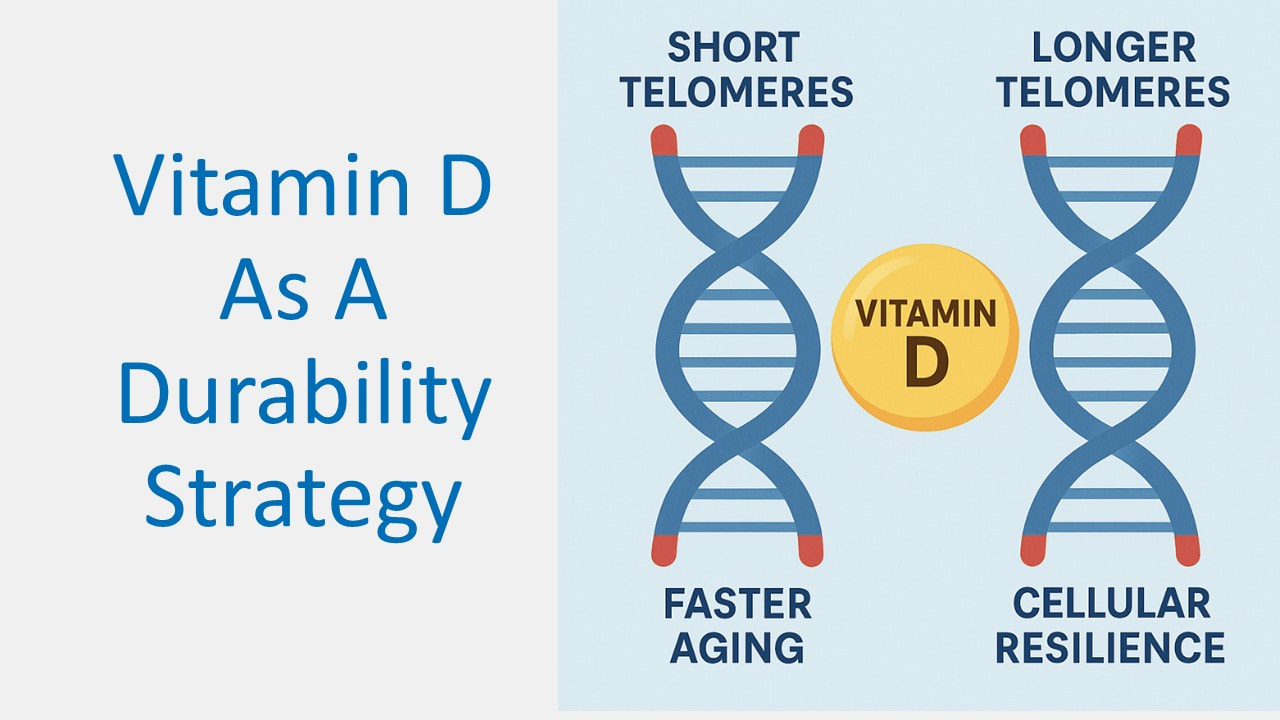 By Dr. Mark Kovacs, PhD, FACSM, CSCS Human Performance Strategist, Longevity and Durability Expert In the ongoing search for science-backed ways to extend healthspan and improve cellular resilience, a new study in The American Journal of Clinical Nutrition has made headlines for linking a common supplement, vitamin D, to potential slowing of biological aging. While vitamin D has long been championed for its role in bone health, immunity, and inflammation modulation, this new data points to another intriguing benefit: the preservation of telomere length, a well-established marker of biological aging. Let’s break down what the science is showing, what it means for your long-term health and performance, and how you might apply these findings safely and strategically in your own lifestyle. What Are Telomeres and Why Do They Matter? Telomeres are repetitive DNA sequences that sit like protective caps on the ends of chromosomes. Each time a cell divides, these caps shorten—a natural part of aging. But when telomeres become critically short, cells either stop dividing or die, contributing to tissue aging and the onset of age-related diseases. Preserving telomere length is increasingly seen as a strategy to not just live longer, but to extend the period of life spent in good health—your healthspan. In short: The Study: Vitamin D and Telomere Preservation This research comes from the VITAL trial (VITamin D and OmegA-3 TriaL), a large, randomized controlled study involving over 1,000 adults aged 50 and older. Participants were given either vitamin D3 supplements (2,000 IU daily), omega-3 fatty acids, or a placebo for four years. The researchers, led by Haidong Zhu and colleagues, evaluated leukocyte telomere length (LTL)—a marker of biological aging—at two and four-year intervals. Key Findings:
Why Might Vitamin D Help Preserve Telomeres? While more research is needed, there are several proposed mechanisms:
Important Caveats: Interpreting the Research Carefully As promising as these results are, there are some limitations that must be acknowledged:
How Much Vitamin D Is Too Much? Understanding Safe Dosing Vitamin D is a fat-soluble vitamin, meaning excess amounts can accumulate in the body and cause toxicity. Over-supplementation can lead to problems such as kidney damage, calcium imbalances, and heart rhythm issues. The recommended upper limit by the Institute of Medicine is 4,000 IU per day for adults. The VITAL study used 2,000 IU—a moderate dose that is generally considered safe for long-term use under medical supervision. Rule of thumb: Get your levels tested. The goal is to maintain a blood level of 30–50 ng/mL of 25(OH)D, which is considered sufficient for most adults. However, in my work using blood work I do like to see it higher in many individuals. Having tested blood work in more than 1000 of the highest achievers most in sports, it is valuable to personalize the approach, above and beyond just looking at minimum standards for health. We want maximum optimization. Who May Benefit the Most? A Precision Approach While broad public health guidelines apply to all, certain groups may experience even greater benefits from vitamin D supplementation when it comes to healthy aging:
The Durability Perspective: Where This Fits In At the Kovacs Institute, we define DURABILITY as the ability to sustain high performance – physically, mentally and emotionally – over time, without breaking down. It is not just about surviving longer (longevity), it is about staying strong, sharp, and capable as you age. Telomere length is one of many biological age markers we track as part of performance blood panels for both athletes and executives in our ongoing advising for some of the best in the world. Vitamin D’s potential to preserve telomere length aligns with our recommendations over the past decade. Rather than obsessing over one biomarker or one supplement, we believe in stacking multiple low-risk, high-impact behaviors—a strategy we call compounded wellness and performance. Putting It Into Action: What You Can Do Today
Here’s how to translate this research into your real life:
What Comes Next: The Future of Nutritional Longevity If further research confirms vitamin D’s role in slowing biological aging, it could reshape guidelines for preventive health, particularly in middle-aged and older adults. We’re entering an era where micronutrients meet molecular diagnostics, allowing us to make better, more personalized decisions about supplementation. But for now, the takeaway is simple: vitamin D isn’t just about bones anymore. It might be part of your anti-aging arsenal—especially if you’re strategic, measured, and science-driven in your approach. Final Thoughts from Dr. Mark Kovacs Developing Lifestyle Durability isn’t luck. It’s built day by day through small, smart decisions backed by solid science. This new telomere research offers one more tool to help you stay strong, resilient, and high-performing—regardless of age. We’re here to help you unlock the most durable version of yourself. References https://ajcn.nutrition.org/article/S0002-9165(25)00255-2/abstract Zhu H, Manson JE, Cook NR, Bekele BB, Chen L, Kane KJ, Huang Y, Li W, Christen W, Lee IM, Dong Y. Vitamin D3 and marine ω-3 fatty acids supplementation and leukocyte telomere length: 4-year findings from the VITamin D and OmegA-3 TriaL (VITAL) randomized controlled trial. Am J Clin Nutr. 2025 May 21:S0002-9165(25)00255-2. doi: 10.1016/j.ajcnut.2025.05.003. Epub ahead of print. PMID: 40409468. By Dr. Mark Kovacs, PhD, FACSM | Founder, Kovacs Institute In my work with elite athletes, Fortune 500 executives, and high-performing individuals worldwide, one of the first tools I reach for isn’t a training protocol, supplement, or sleep tracker—it’s blood work. But not just any blood work. I’m talking about performance blood panels—precision-based diagnostics that go far beyond what traditional medical labs measure. While standard labs are built around diagnosing illness, and finding major medical issues, performance blood work is focused on optimization—helping people function better, feel stronger, and perform longer. This distinction is crucial, especially in today’s high-pressure, high-stakes world, where people are burning out faster, aging biologically before their time, and navigating health advice that often feels reactive instead of empowering. In this article, I’ll walk you through:
Traditional Medical Blood Work vs. Performance Blood Panels The conventional healthcare system is designed to detect disease. If your blood markers are in the “normal range,” you’re considered healthy—even if you’re tired, inflamed, underperforming, or mentally foggy. “Normal” simply means you fit within a population average—not that you’re operating at your best. Normal is not the goal. Optimization is the goal and the individuals I work with are competing against the best in the world. By contrast, performance blood work is tailored to optimize:
 Dr. Kovacs’ Blood Analysis Background: Thousands of Panels, Elite Pedigree Over the last two decades, I’ve personally analyzed over 1,000 blood panels from elite athletes, Olympians, professional tennis players, NBA & MLB All-Stars, Professional Golfers, US Soccer greats and high-performing executives and business titans. This includes some of the most demanding performance environments in the world—training centers, corporate boardrooms, and global sporting arenas. My graduate training included intensive work inside two dedicated blood and sweat testing laboratories, where I developed hands-on expertise in biomarker interpretation, fluid loss diagnostics, and nutrient depletion under extreme stress. Later, I was honored to direct the Gatorade Sport Science Institute (GSSI)—one of the world’s most respected performance labs—where we worked with pro athletes from nearly every major sport. One of the most formative chapters in my career was my time working with Dr. Randy Wilber, who served as the Senior Sport Physiologist at the U.S. Olympic Committee for nearly 30 years and he worked across seven Olympic Games cycles. Dr. Wilber was instrumental in helping me understand the nuance and complexity behind using blood chemistry—not just for diagnosing problems, but for fine-tuning the body to compete at the world’s highest levels. The world’s best need precision and personalization in interpretation. The frameworks we now use at the Kovacs Institute are the culmination of that experience, adapted to serve not only elite athletes, but executives, entrepreneurs, and anyone committed to building durability—the ability to perform at a highest level for a long time, with energy, clarity, and resilience. Why Performance Blood Testing Matters 1. You Can’t Improve What You Don’t Measure Data is the foundation of personalization. Guesswork or general advice won’t cut it when you’re trying to improve performance in a precise, sustainable way. Performance blood panels reveal your baseline physiology, flagging even subtle imbalances before they manifest as illness or burnout. 2. Early Intervention Equals Better Outcomes Many markers like insulin sensitivity, oxidative stress, vitamin D levels, or testosterone may look "acceptable" on a traditional report but be far from ideal for your specific goals. Catching these early allows us to intervene with lifestyle, nutrition, recovery, or supplementation strategies—often avoiding medication altogether. 3. Individualized Health Optimization Two people with the same cholesterol level may need vastly different interventions depending on genetics, training load, or inflammation. Precision data allows for tailored strategies, whether you're aiming for peak sport performance, boardroom focus, or long-term brain health. Who Benefits Most from Performance Testing? At the Kovacs Institute, we’ve refined our Durability Blood Panels through years of working across three distinct populations: 1. Elite Athletes
Case Study Highlights (De-Identified)
Making Blood Work Actionable: What Happens After the Draw?
Why This Matters Now Performance blood work is no longer a luxury for professional athletes—it’s a necessity for anyone who wants to thrive in their career, sport, or life. In an era of wearable tech, data overload, and conflicting advice, blood chemistry remains the gold standard for personalized performance, resilience, and healthspan. At the Kovacs Institute, we consider it the foundation of Durability—our science-based framework for helping you live younger, longer, and stronger. Whether you’re a coach, executive, athlete, or any high performing individual, the message is simple: Test smarter. Intervene earlier. Perform longer. Essential Blood Tests for Athletes and High Achievers What to Measure. Why It Matters. How It Optimizes You. Complete Blood Count (CBC) Why It Matters: Identifies fatigue, recovery limitations, and immune stress by tracking red blood cells, hemoglobin, and white cell patterns. Athlete/High Performer Benefit: Low hemoglobin or hematocrit can crush endurance and recovery—common in overtraining or altitude changes. Comprehensive Metabolic Panel (CMP) Why It Matters: Screens hydration, electrolyte balance, kidney/liver function, and blood sugar control. Athlete/High Performer Benefit: Spot early signs of dehydration, poor nutrition, or high-protein load strain on kidneys/liver. Ferritin / Iron / TIBC (Iron Panel) Why It Matters: Tracks oxygen-carrying capacity and energy levels. Athlete/High Performer Benefit: Low ferritin is one of the most common causes of “mystery fatigue,” especially in female athletes and endurance populations. Lipid Panel (HDL, LDL, Triglycerides) Why It Matters: Evaluates cardiovascular efficiency and fat metabolism. Athlete/High Performer Benefit: High performers often assume low risk, but imbalanced lipids + inflammation = stealth heart strain. hs-CRP (High-sensitivity C-reactive Protein) Why It Matters: Detects low-grade inflammation linked to overtraining and chronic stress. Athlete/High Performer Benefit: Elevated CRP may mean you’re under-recovering—even if your training is dialed in. Vitamin D (25-hydroxy D) Why It Matters: Supports muscle repair, hormone balance, and immune regulation. Athlete/High Performer Benefit: Sub-optimal D is a known performance killer—linked to increased injury rates and longer recovery times. Cortisol (Morning) Why It Matters: Measures stress response and adrenal function. Athlete/High Performer Benefit: Spikes = burnout risk. Flatlines = overreached. Vital for mapping your load vs. recovery. Creatine Kinase (CK) Why It Matters: Direct marker of muscle tissue breakdown. Athlete/High Performer Benefit: High CK post-training is expected—but chronically elevated CK = injury risk or poor program design. Testosterone (Total & Free) Why It Matters: Governs energy, muscle mass, drive, and resilience. Athlete/High Performer Benefit: Tracking free T—not just total—is key for recovery and motivation. Declines signal overload or micronutrient deficiency. SHBG (Sex Hormone-Binding Globulin) Why It Matters: Regulates active hormone availability. Athlete/High Performer Benefit: Elevated SHBG (common with low protein intake or overtraining) makes testosterone less effective—even if labs say “normal.” Thyroid Panel (TSH, Free T3, Free T4) Why It Matters: Controls metabolism, energy, and thermoregulation. Athlete/High Performer Benefit: Low Free T3 is common in endurance athletes and can lead to slow recovery, cold intolerance, and mood shifts. Vitamin B12 / Folate Why It Matters: Critical for red blood cell production and nervous system function. Athlete/High Performer Benefit: Subtle deficiencies = brain fog, numbness, and loss of explosiveness or focus. Magnesium (RBC) Why It Matters: Key electrolyte for muscle contraction, sleep, and stress control. Athlete/High Performer Benefit: RBC magnesium > serum for accuracy. Low levels = cramps, anxiety, poor sleep, and sub-par HRV. Zinc / Copper Why It Matters: Influences hormone health, antioxidant defenses, and tissue repair. Athlete/High Performer Benefit: Low zinc = testosterone drop. Imbalance = sluggish recovery or weakened immune defense. Insulin / Fasting Glucose / HOMA-IR Why It Matters: Reflects metabolic flexibility and fuel partitioning. Athlete/High Performer Benefit: Athletes with low HOMA-IR usually recover faster and have better body composition. Elevated insulin = hidden risk. IGF-1 (Insulin-like Growth Factor 1) Why It Matters: Reflects anabolic recovery and growth potential. Athlete/High Performer Benefit: Low IGF-1 = poor training response. High IGF-1 (within range) supports lean mass and joint integrity. Homocysteine Why It Matters: Marker of methylation efficiency and cardiovascular risk. Athlete/High Performer Benefit: Elevated levels impair blood flow and recovery; optimizing this boosts nitric oxide and mitochondrial repair. DHEA-S Why It Matters: Supports resilience, mood, and hormone conversion. Athlete/High Performance Benefit: Declines with age and overtraining. Low DHEA = poor stress tolerance and reduced durability. NT-proBNP / hs-Troponin Why It Matters: Measures cardiac output and heart stress. Athlete/High Performance Benefit: Especially valuable for masters athletes and endurance sports—flagging hidden cardiac strain early. ALT/AST Ratios Why It Matters: Indicates liver stress or muscle breakdown. Athlete Benefit: Helps distinguish between healthy post-training enzyme spikes vs. problematic liver or supplement overload. ApoB / Lp(a) / Oxidized LDL Why It Matters: Advanced markers of cardiovascular inflammation. Athlete Benefit: Traditional cholesterol doesn’t tell the whole story—these identify hidden atherosclerosis risk in fit bodies. Cytokines (IL-6, TNF-alpha) Why It Matters: Inflammatory messengers triggered by intense training. Athlete Benefit: Chronic elevation = stagnation or burnout. Used for advanced load management and recovery mapping.  Introduction Every drop of sweat tells a story. Whether you’re an elite athlete chasing milliseconds or a health-conscious individual aiming for better energy and recovery, understanding your sweat is one of the most underrated and powerful tools available today. Sweat testing is a scientifically validated assessment of your body's electrolyte and fluid loss, and is no longer just for professional sports teams. It’s a longevity and performance strategy that belongs in every serious wellness plan. I have been performing sweat testing for more than 20 years. I have been fortunate to work with some of the best in sweat including at two heat, hydration, sweat and blood labs under the mentorship of two of the best researchers and professors. I spent time directing the Gatorade Sport Science Institute where we would test hundreds of individuals on a weekly basis across multiple locations including at our headquarters in Chicago and also onsite at IMG Academy in Florida. In addition, I have worked with the top exercise physiologist at the US Olympic Committee analyzing blood and sweat for Olympic athletes. Although I still work with elite athletes to dialing in personalized sweat and hydration plans for training and competition, I have been spending more time working with individuals looking to improve health, performance and longevity. In this article, I’ll explain the science behind sweat testing, the health and performance implications of electrolyte balance, and how personalized hydration protocols can dramatically improve how you feel, function, and age — both on and off the court. What Is Sweat Testing? Sweat testing is a diagnostic tool used to measure the concentration of electrolytes — primarily sodium — lost in your sweat during physical activity. In professional environments, it typically includes:
Why It Matters: Beyond the Field We typically associate hydration with elite sports, but proper fluid and electrolyte balance impacts nearly every system in the body. From cardiovascular efficiency and cognitive clarity to muscle recovery and metabolic aging, sweat testing helps uncover one of the most essential — and overlooked — components of long-term health. Longevity Impact Dehydration and electrolyte imbalances are not just short-term performance issues — they are deeply intertwined with long-term health risks. Chronic underhydration and misaligned electrolyte intake can trigger elevated cortisol levels, impair parasympathetic nervous system tone, and reduce sleep efficiency. Together, these contribute to a higher resting heart rate, inflammation, and metabolic dysregulation. These are core markers of reduced healthspan and increased disease risk (Maughan & Shirreffs, 2010).
The Science Behind Sweat Sweating is the body’s primary mechanism to regulate temperature. During physical exertion or heat exposure, sweat glands excrete fluid containing water and dissolved electrolytes. Sodium is the primary electrolyte lost in significant amounts, with typical losses ranging from 500–2000 mg per liter of sweat (Casa et al., 2000). However, these values are not one-size-fits-all. Sweat sodium concentrations vary due to genetics, acclimatization, diet, training status, and glandular efficiency. Without proper replacement, high-sodium sweaters are more likely to:
Sweat Testing for the Everyday Athlete You don’t have to be an Olympian to benefit from sweat testing. If you:
Even recreational exercisers lose between 0.5–2.5 liters of sweat per hour of moderate physical activity. Replacing this fluid without knowing your sweat composition often leads to overhydration (hyponatremia) or underhydration — both of which compromise energy and cognition. Personalized Hydration Plans After a sweat test, your hydration plan becomes data-driven. It might look something like this: This precision approach improves both your short-term performance and long-term recovery. Elite Athletes & Sweat Testing: Margins That Matter For elite athletes, milliseconds matter. A small imbalance in hydration or electrolyte levels can determine whether a match is won or lost, a record broken or missed. At the Kovacs Institute, we routinely test top professional tennis players, golfers, baseball players, and military operators. What we see consistently:
Case Study: Pro Tennis in Extreme Heat Having tested over 1000 individuals over many years, this is a representative example. Last week in Florida, a sweat test performed in 90 degree and 70% humidity, revealed that a top tennis player was losing over 2.4 L/hour of fluid and nearly 2000 mg sodium/hour. After struggling for two years with cramping issues, low energy at the end of matches and struggling to find appropriate solutions, this data provided the athlete and his team with concrete data that showed that both his sweat rate and sodium loss was significantly more than what he had thought. His previous hydration was significantly below what was needed. A new plan was provided that was highly personalized:
Special Populations: Women, Older Adults, and Heat Sensitivity Women typically sweat less in volume but can lose proportionally higher sodium due to glandular density. Hormonal cycles also affect thermoregulation, and hydration strategies should be adjusted accordingly. The need for sweat testing may even be more pronounced. Older adults have reduced thirst signals and sweat gland efficiency. Sweat testing can help identify risk factors for heat illness, especially in those on medications or with cardiovascular disease. Heat-sensitive individuals including those with autoimmune issues, chronic fatigue, or long COVID symptoms, may benefit from maintaining tight control over fluid and electrolyte balance to manage inflammation and energy levels. How Sweat Testing Works 1. Patch Testing
2. Saliva Testing
Integrating Sweat Testing Into Your Health Plan Sweat testing is not just a performance tool — it’s a health diagnostic. It can be part of:
Practical Takeaways
Getting Started At the Kovacs Institute, we offer comprehensive sweat testing integrated into our Durability Protocols — designed to enhance not just your athletic output, but your quality of life and healthspan. If you’re serious about:
Conclusion Sweat is more than a sign of hard work — it’s a diagnostic window into your internal environment. Whether you're trying to win Wimbledon or just feel better during workouts, understanding your sweat composition can improve hydration, recovery, performance, and long-term health. In the pursuit of durability and longevity, the answers are often found in the details — and your sweat may be one of the most overlooked. References
|
AuthorDr. Mark Kovacs, PhD, FACSM is a globally recognized expert in human performance, longevity, healthspan, and sports science. A former professional athlete turned performance physiologist, Dr. Kovacs has trained world champions, Fortune 100 executives, and Olympic medalists. Dr. Kovacs has held some of the top roles with iconic brands across longevity, health, medical, wellness and sports. These include as VP of Health & Performance at Canyon Ranch (the largest resort wellness and healthcare company in the US), an executive at Pepsico/Gatorade, the head of Sport Science & Health in the NBA with the Cleveland Cavaliers and the United States Tennis Association (USTA). As a result he has been at the forefront of longevity and healthspan innovation for over two decades. He is a leading voice in longevity science, he bridges elite athletics with cutting-edge health optimization—helping high performers live younger, longer, and stronger. ArchivesCategories
All
|
|
© Mark Kovacs. All rights reserved. |













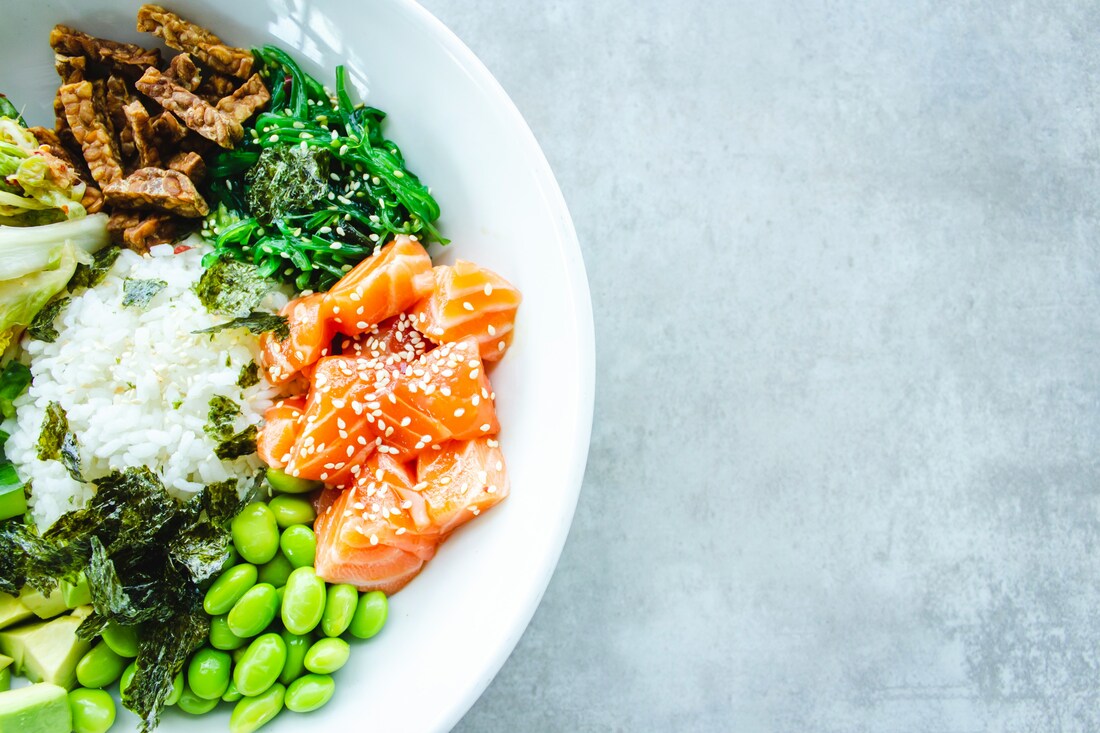
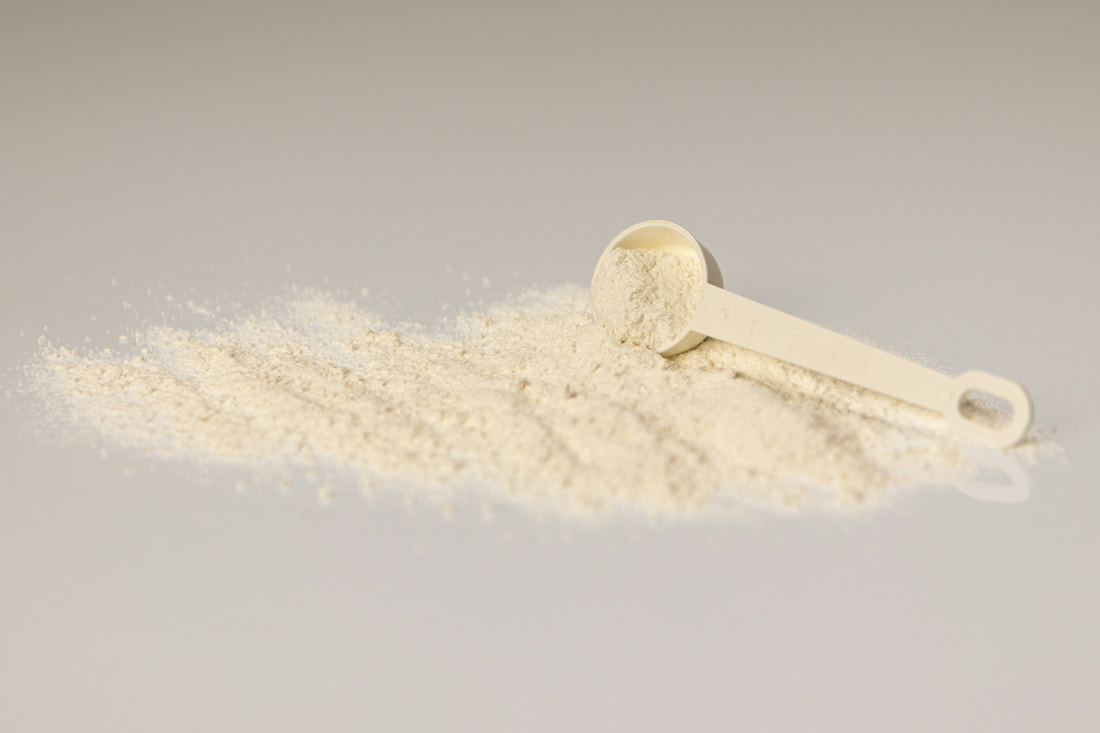
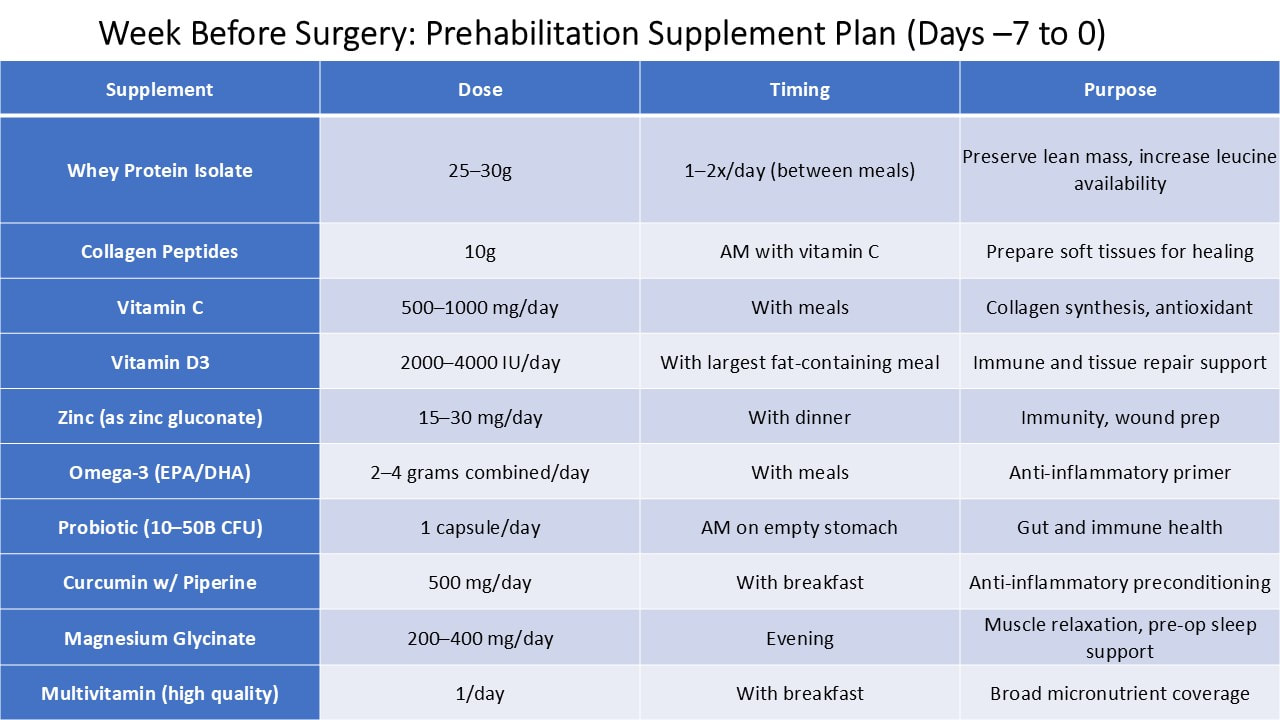
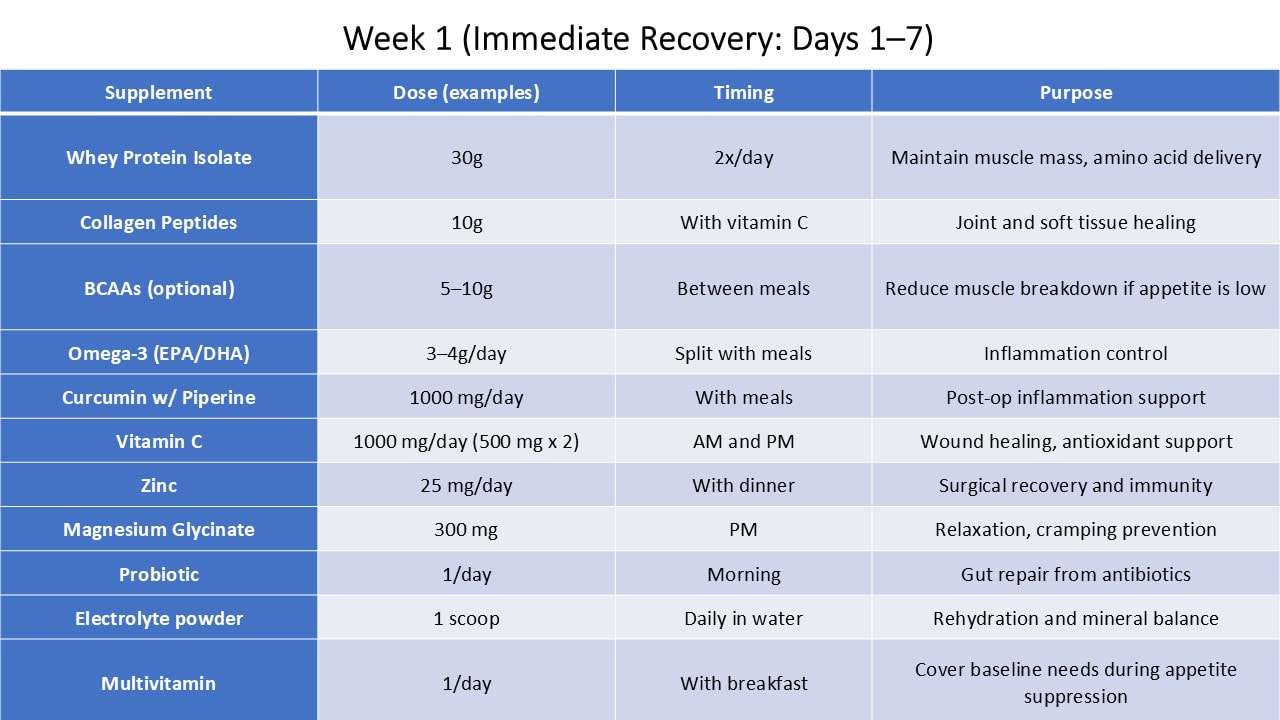
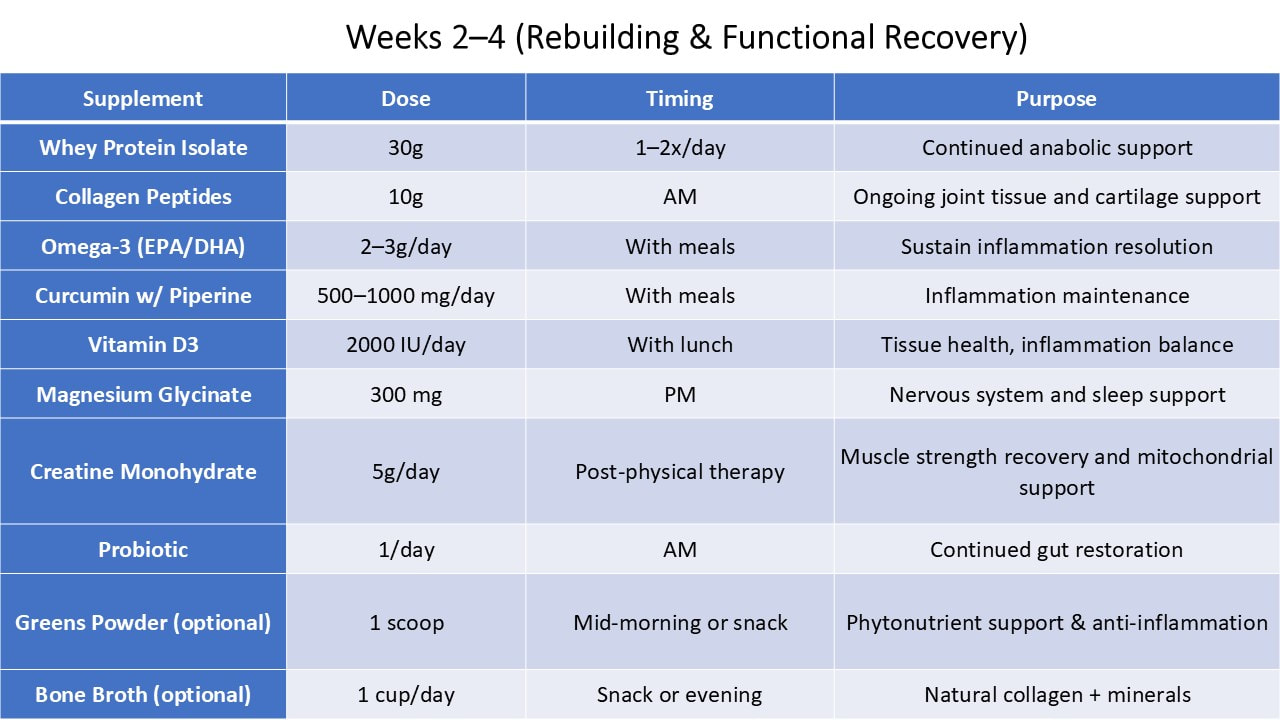
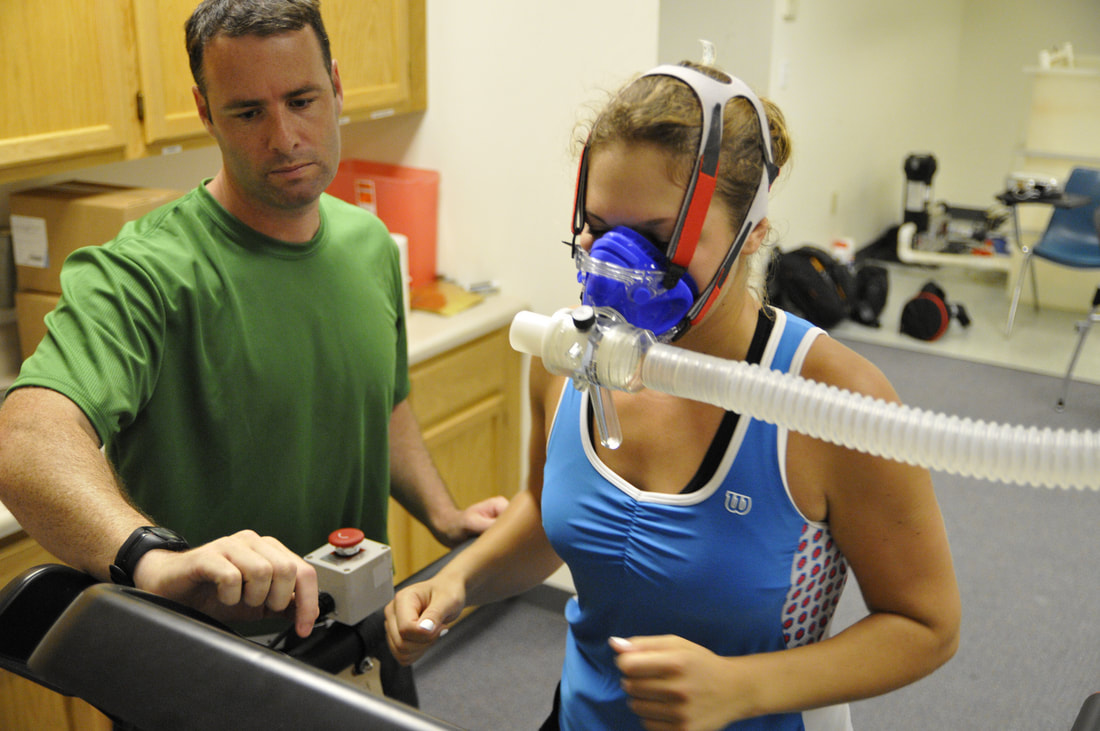
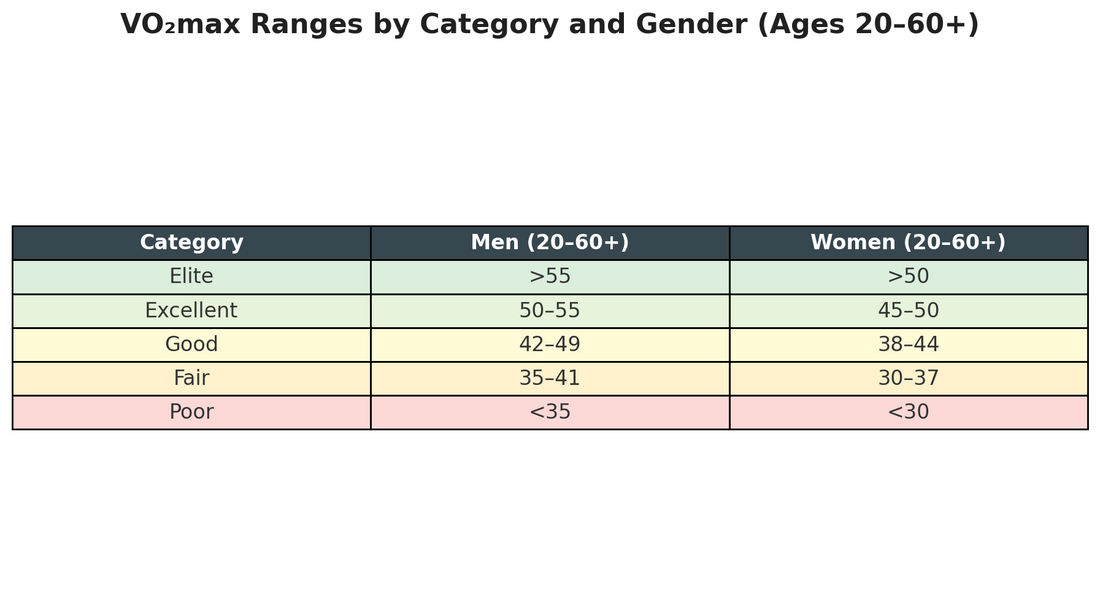


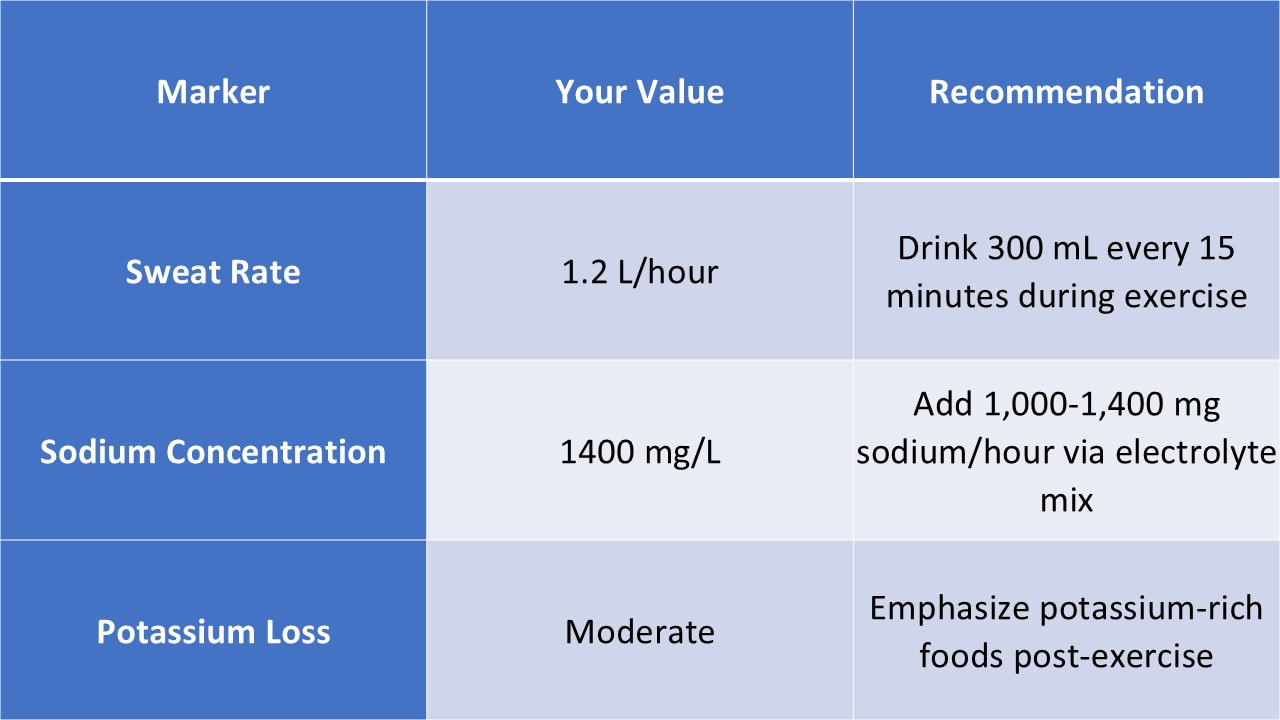
 RSS Feed
RSS Feed